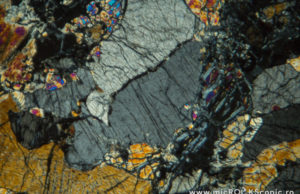About Wollastonite
Wollastonite is one of the most important minerals within the pyroxenoid group, among rhodonite and pectolite. Like the pyroxenes, the pyroxenoid frame is a single chain, but the individual tetrahedra are twisted relative to those in the pyroxene chain. Wollastonite is named in 1818 by J. Léman in honor of William Hyde Wollaston (1766-1828), an English mineralogist and chemist.
Wollastonite hand-specimen
Formula: CaSiO3
System: Triclinic
Color: White, gray-white, light, etc.
Lustre: Vitreous, Pearly
Hardness: 4½–5
Density: 2.86–3.09
System: Triclinic
Color: White, gray-white, light, etc.
Lustre: Vitreous, Pearly
Hardness: 4½–5
Density: 2.86–3.09
Wollastonite PPL properties
Relief: Moderate positive
Habit/Form: Usually bladed, columnar, or fibrous; elongate parallel to the b axis, and flattened parallel to {100} or {001}
Color: Colorless or turbid owing to many small inclusions (gas?). Coarse pieces are colorless, gray, or pale yellow
Pleochroism: –
Cleavage: Perfect on {100}, good on {001} and {-102}
Habit/Form: Usually bladed, columnar, or fibrous; elongate parallel to the b axis, and flattened parallel to {100} or {001}
Color: Colorless or turbid owing to many small inclusions (gas?). Coarse pieces are colorless, gray, or pale yellow
Pleochroism: –
Cleavage: Perfect on {100}, good on {001} and {-102}
Wollastonite XPL properties
Isotropy/Anisotropy: Anisotropic
Interference color: Order I red; the maximum interference color is about orange of the first order. Longitudinal sections show gray or white interference colors
Extinction angle: Almost parallel / 0° / straight in longitudinal sections (3-5°), oblique in cross sections (30-44°)
Twins: Twins with {100} as twin-plane are known
Uniaxial/Biaxial: Biaxial (-)
Optic axial angle (2V): 2V measured: 36 – 60°
Interference color: Order I red; the maximum interference color is about orange of the first order. Longitudinal sections show gray or white interference colors
Extinction angle: Almost parallel / 0° / straight in longitudinal sections (3-5°), oblique in cross sections (30-44°)
Twins: Twins with {100} as twin-plane are known
Uniaxial/Biaxial: Biaxial (-)
Optic axial angle (2V): 2V measured: 36 – 60°
Wollastonite distinguishing features under the microscope
Get Geology Toolkit Premium for more features of Wollastonite thin section under the microscope.
References
- Deer, W. A., Howie, R. A., & Zussman, J. (2013). An introduction to the rock-forming minerals (pp. 498). Mineralogical Society of Great Britain and Ireland, London.
- mindat.org – The Mineral Database

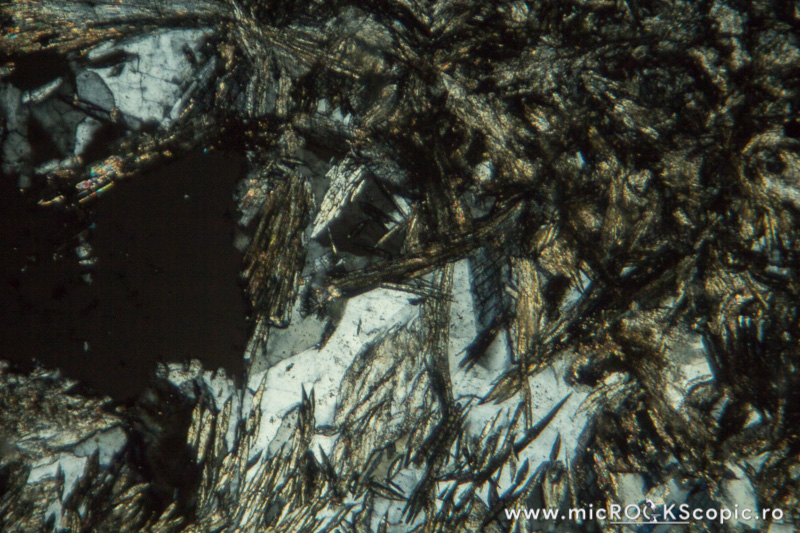

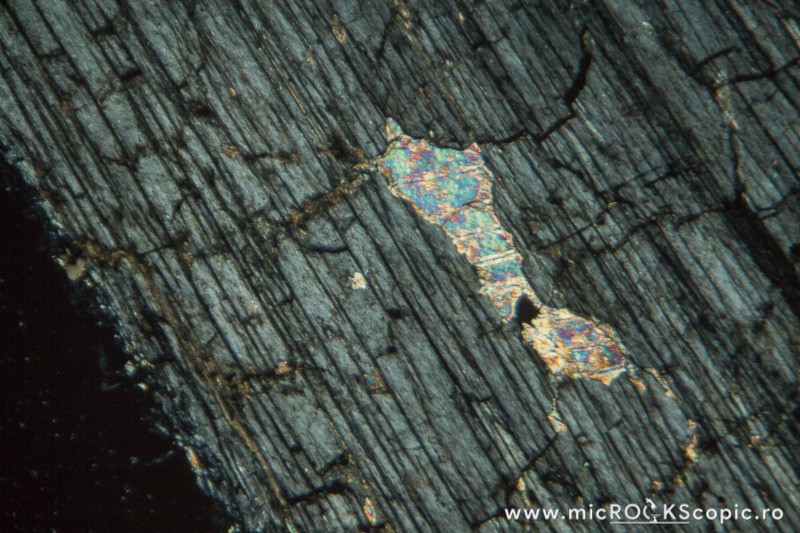
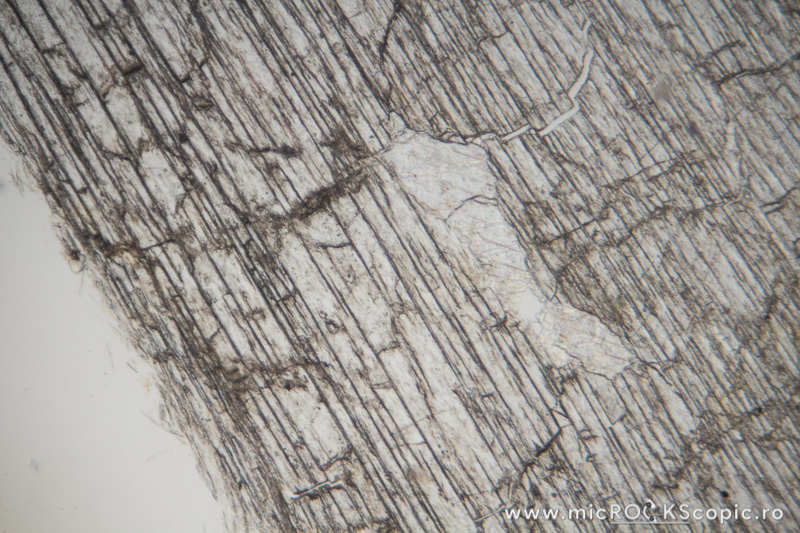

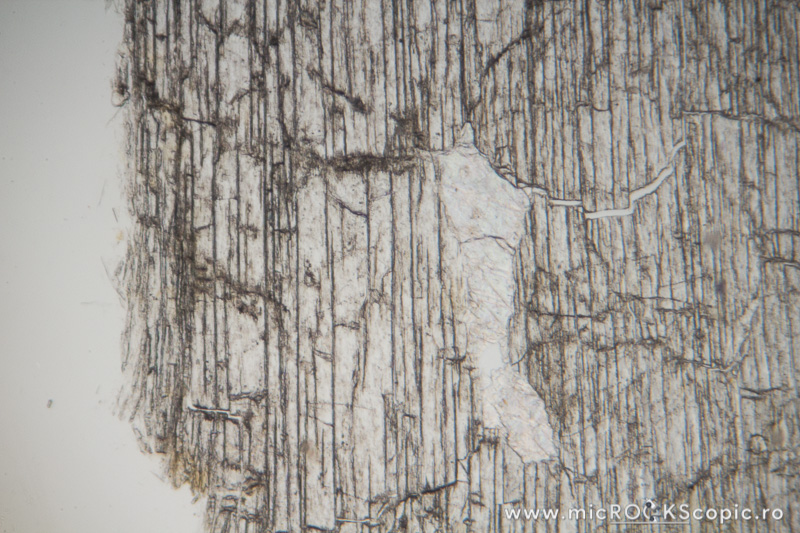

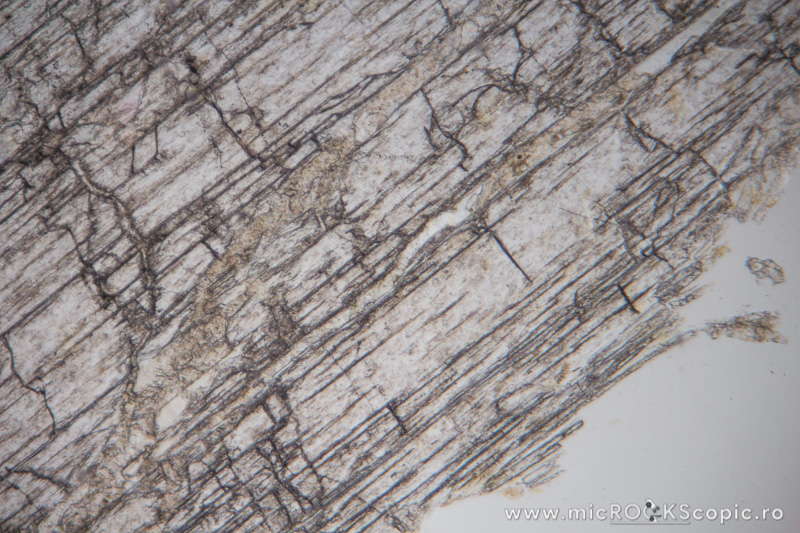





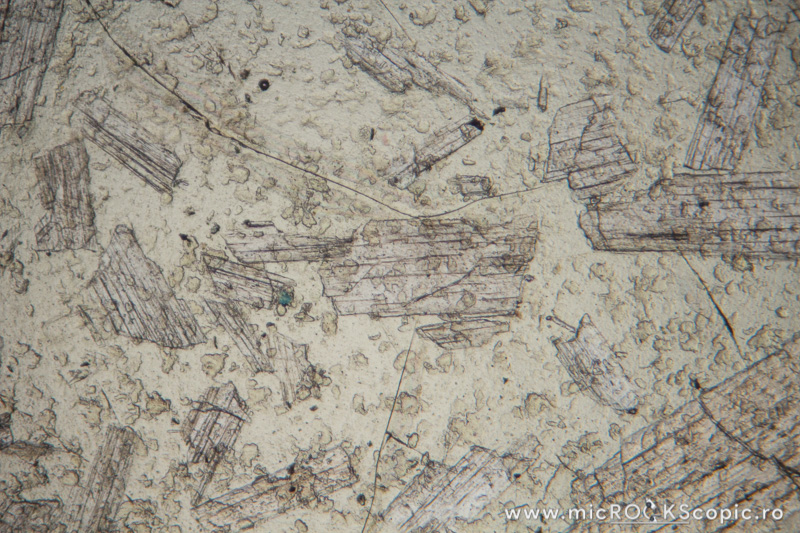
![[thumb]](http://microckscopic.ro/wp-content/uploads/wollastonite_2_12-150x150.jpg)
![[thumb]](http://microckscopic.ro/wp-content/uploads/wollastonite_04-150x150.jpg)
![[thumb]](http://microckscopic.ro/wp-content/uploads/wollastonite_01-150x150.jpg)
![[thumb]](http://microckscopic.ro/wp-content/uploads/wollastonite_1_05-1-150x150.jpg)
![[thumb]](http://microckscopic.ro/wp-content/uploads/wollastonite_1_10-150x150.jpg)
![[thumb]](http://microckscopic.ro/wp-content/uploads/wollastonite_3_06-150x150.jpg)
![[thumb]](http://microckscopic.ro/wp-content/uploads/wollastonite_3_10-150x150.jpg)






